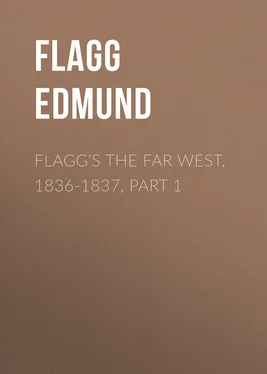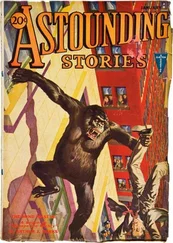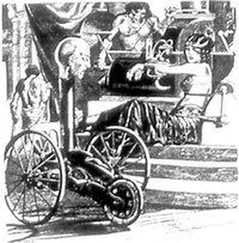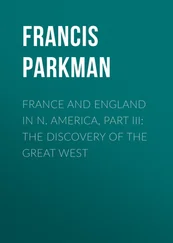Edmund Flagg - Flagg's The Far West, 1836-1837, part 1
Здесь есть возможность читать онлайн «Edmund Flagg - Flagg's The Far West, 1836-1837, part 1» — ознакомительный отрывок электронной книги совершенно бесплатно, а после прочтения отрывка купить полную версию. В некоторых случаях можно слушать аудио, скачать через торрент в формате fb2 и присутствует краткое содержание. Издательство: Иностранный паблик, Жанр: foreign_antique, foreign_prose, Путешествия и география, на английском языке. Описание произведения, (предисловие) а так же отзывы посетителей доступны на портале библиотеки ЛибКат.
- Название:Flagg's The Far West, 1836-1837, part 1
- Автор:
- Издательство:Иностранный паблик
- Жанр:
- Год:неизвестен
- ISBN:нет данных
- Рейтинг книги:4 / 5. Голосов: 1
-
Избранное:Добавить в избранное
- Отзывы:
-
Ваша оценка:
- 80
- 1
- 2
- 3
- 4
- 5
Flagg's The Far West, 1836-1837, part 1: краткое содержание, описание и аннотация
Предлагаем к чтению аннотацию, описание, краткое содержание или предисловие (зависит от того, что написал сам автор книги «Flagg's The Far West, 1836-1837, part 1»). Если вы не нашли необходимую информацию о книге — напишите в комментариях, мы постараемся отыскать её.
Flagg's The Far West, 1836-1837, part 1 — читать онлайн ознакомительный отрывок
Ниже представлен текст книги, разбитый по страницам. Система сохранения места последней прочитанной страницы, позволяет с удобством читать онлайн бесплатно книгу «Flagg's The Far West, 1836-1837, part 1», без необходимости каждый раз заново искать на чём Вы остановились. Поставьте закладку, и сможете в любой момент перейти на страницу, на которой закончили чтение.
Интервал:
Закладка:
71
The following extract from the Journal of Charlevoix, one of the earliest historians of the West, with reference to the Mines upon the Merrimac, may prove not uninteresting. The work is a rare one.
"On the 17th (Oct., 1721), after sailing five leagues farther, I left, on my right, the river Marameg, where they are at present employed in searching for a silver mine. Perhaps your grace may not be displeased if I inform you what success may be expected from this undertaking. Here follows what I have been able to collect about this affair, from a person who is well acquainted with it, and who has resided for several years on the spot.
"In the year 1719, the Sieur de Lochon, being sent by the West India Company, in quality of founder, and having dug in a place which had been marked out to him, drew up a pretty large quantity of ore, a pound whereof, which took up four days in smelting, produced, as they say, two drachms of silver; but some have suspected him of putting in this quantity himself. A few months afterward he returned thither, and, without thinking any more of the silver, he extracted from two or three thousand weight of ore fourteen pounds of very bad lead, which stood him in fourteen hundred francs. Disgusted with a labour which was so unprofitable, he returned to France.
"The company, persuaded of the truth of the indications which had been given them, and that the incapacity of the founder had been the sole cause of their bad success, sent, in his room, a Spaniard called Antonio, who had been taken at the siege of Pensacola; had afterward been a galley-slave, and boasted much of his having wrought in a mine at Mexico. They gave him very considerable appointments, but he succeeded no better than had done the Sieur de Lochon. He was not discouraged himself, and others inclined to believe that he had failed from his not being versed in the construction of furnaces. He gave over the search after lead, and undertook to make silver; he dug down to the rock, which was found to be eight or ten feet in thickness; several pieces of it were blown up and put into a crucible, from whence it was given out that he extracted three or four drachms of silver; but many are still doubtful of the truth of this fact.
"About this time arrived a company of the King's miners, under the direction of one La Renaudiere , who, resolving to begin with the lead mines, was able to do nothing; because neither he himself nor any of his company were in the least acquainted with the construction of furnaces. Nothing can be more surprising than the facility with which the company at that time exposed themselves to great expenses, and the little precaution they took to be satisfied of the capacity of those they employed. La Renaudiere and his miners not being able to procure any lead, a private company undertook the mines of the Marameg, and Sieur Renault, one of the directors, superintended them with care. In the month of June last he found a bed of lead ore two feet in thickness, running to a great length over a chain of mountains, where he has now set his people to work. He flatters himself that there is silver below the lead. Everybody is not of his opinion, but will discover the truth." – Flagg.
72
Flagg's account agrees with a much longer treatment by Lewis C. Beck, in his Gazetteer of the States of Illinois and Missouri (Albany, 1823), with the exception that the latter says there were no inscriptions to be found on the gravestones. Beck himself makes extended quotations from the Missouri Gazette , November 6, 1818, and subsequent numbers. Though no doubt exaggerated, these accounts were probably based on facts, for a large number of prehistoric remains have been found in St. Louis County and preserved in the Peabody Museum at New Haven, Connecticut, and elsewhere. – Ed.
73
For an account of Jefferson Barracks, see Townsend's Narrative , in our volume xxi, p. 122, note 2. – Ed.
74
For the history of Carondelet, see Maximilian's Travels , in our volume xxii, p. 215, note 124.
For reference to Cahokia, see A. Michaux's Travels , in our volume iii, p. 70, note 135.
On May 20, 1826, Congress made an appropriation of fifteen thousand dollars to the secretary of war, for the purpose of purchasing the site for the erection of an arsenal in the vicinity of St. Louis. Lands now far within the southeastern limits of the city were purchased, and the buildings erected which were used for arsenals until January 16, 1871, when they were occupied as a depot for the general mounted recruiting service. – Ed.
75
A name of Algonquin origin — Missi signifying great, and sepe a river. – Flagg.
76
Indian name for the "Falls of St. Anthony." – Flagg.
77
That the Mississippi, the Missouri, and, indeed, most of the great rivers of the West, are annually enlarging, as progress is made in clearing and cultivating the regions drained by them, scarcely admits a doubt. Within the past thirty years, the width of the Mississippi has sensibly increased; its overflows are more frequent, while, by the diminution of obstructions, it would seem not to have become proportionally shallow. In 1750, the French settlements began upon the river above New-Orleans, and for twenty years the banks were cultivated without a levee . Inundation was then a rare occurrence: ever since, from year to year, the river has continued to rise, and require higher and stronger embankments. A century hence, if this phenomenon continues, what a magnificent spectacle will not this river present! How terrific its freshets! The immense forest of timber which lies concealed beneath its depths, as evinced by the great earthquakes of 1811, demonstrates that, for centuries, the Mississippi has occupied its present bed. – Flagg.
78
In 1764 Auguste Chouteau made tentative plans for the fortification of St. Louis. In obedience to an order by Don Francisco Cruzat, the lieutenant-governor, he made a survey in 1781 for the purpose of perfecting these earlier plans. In the same year the stockade was begun immediately south of the present site of the courthouse. In 1797 the round stone tower which Flagg mentions was constructed and preparations made for building four additional towers; the latter were never completed. From 1804 to 1806 these fortifications were used by the United States troops, and then abandoned for military purposes. The commandant's house served as a courthouse from 1806 to 1816; and the tower as a jail until 1819. For a detailed description of the plans, see J. F. Scharf, St. Louis City and County (Philadelphia, 1883), p. 136 ff. – Ed.
79
For a brief sketch of William H. Ashley see Maximilian's Travels , in our volume xxii, p. 250, note 198. He purchased (1826 or 1827) eight acres on the present site of Broadway, between Biddle and Bates streets, St. Louis, where he built a handsome residence.
Bloody Island, now the Third Ward of East St. Louis, was formed about 1800 by the current cutting its way through the neck in a bend of the river. For a long time it was not determined to what state it belonged, and being considered neutral ground many duels were fought there, notably those between Thomas H. Benton and Charles Lucas (1817), United States District Attorney Thomas Rector and Joshua Barton (1823), and Thomas Biddle and Spencer Pettis (1830). The name was derived from these bloody associations. – Ed.
80
For a sketch of Charlevoix, see Nuttall's Journal , in our volume xiii, p. 116, note 81. – Ed.
Читать дальшеИнтервал:
Закладка:
Похожие книги на «Flagg's The Far West, 1836-1837, part 1»
Представляем Вашему вниманию похожие книги на «Flagg's The Far West, 1836-1837, part 1» списком для выбора. Мы отобрали схожую по названию и смыслу литературу в надежде предоставить читателям больше вариантов отыскать новые, интересные, ещё непрочитанные произведения.
Обсуждение, отзывы о книге «Flagg's The Far West, 1836-1837, part 1» и просто собственные мнения читателей. Оставьте ваши комментарии, напишите, что Вы думаете о произведении, его смысле или главных героях. Укажите что конкретно понравилось, а что нет, и почему Вы так считаете.












